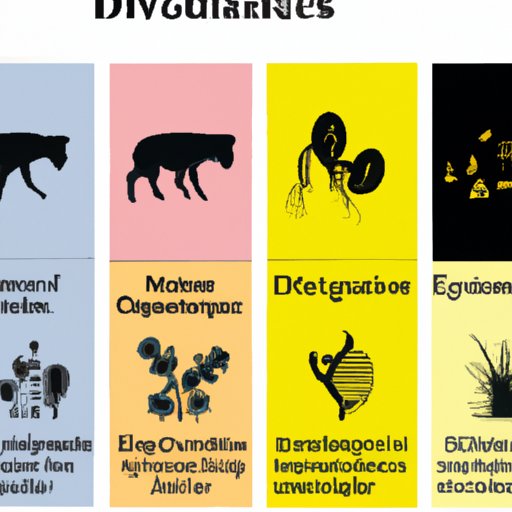Introduction
Species is a term that is widely used in the scientific world, but what does it actually mean? This article explores the scientific meaning of species and its importance in classifying and understanding life on Earth. It will examine the concept of species in biology and evolutionary theory, as well as the impact of species on other organisms and the environment.

Exploring the Definition of Species in Science
In order to understand what species means in science, it is important to first look at the definition of the term. According to the Oxford English Dictionary, a species is “a group of living organisms consisting of similar individuals capable of exchanging genes or interbreeding.”
The scientific definition of species is more precise, and it can be broken down into three main components. First, a species is a group of organisms that share a common set of characteristics, such as physical traits or behavior. Second, these organisms must be able to reproduce with one another to produce viable offspring. Finally, the members of a species are generally isolated from other species, meaning they do not usually interbreed with other species.
In addition to these three components, the concept of species also incorporates an evolutionary component. This means that a species is defined by its ability to adapt and evolve over time, as well as its ability to survive in a changing environment.

The Role of Species in the Scientific World
Species play an important role in the scientific world, as they allow scientists to study and classify different organisms. By grouping organisms into different species, scientists can gain a better understanding of the relationships between various organisms and how they interact with their environment. They can also use this information to study the evolution of different species and the effects that changes in the environment have on them.
In addition to providing a framework for studying and classifying organisms, species also serve as an important tool for conservation. By understanding the different species in an ecosystem, scientists can identify which ones are threatened or endangered and take steps to protect them. This knowledge can also be used to develop strategies to manage and restore ecosystems that have been affected by human activities.

Examining the Use of Species in Scientific Classifications
Species are also used to create scientific classifications, which are systems of categories used to organize different types of organisms. The most commonly used classification system is the Linnaean system, which was developed by Swedish naturalist Carl Linnaeus in the 18th century. This system is based on the idea of assigning each organism a two-part Latin name, which is composed of the genus name and the species name. For example, humans belong to the genus Homo and the species sapiens.
The Linnaean system is still widely used today, but other classification systems have been developed since then. These systems are based on different factors, such as genetics, morphology, and behavior. They are all designed to provide a way to organize and study different types of organisms.
How Species Define Life on Earth: A Scientific Perspective
Species are essential for understanding life on Earth, as they provide a framework for studying and organizing different organisms. They also play a major role in the evolution of life, as they allow for the development of new traits and behaviors over time. Finally, species are important for conservation, as they allow scientists to identify and protect threatened or endangered species.
When examining the impact of species on other organisms, it is important to note that different species can interact with one another in a variety of ways. Some species compete for resources, while others cooperate and form symbiotic relationships. Additionally, some species can have a negative effect on other species, such as when a predator species preys on its prey species. Understanding these interactions can help scientists better understand how species interact and evolve in an ecosystem.
Species also have an important relationship with the environment, as they rely on environmental factors to survive. Different species require different amounts of food, water, and shelter, and changes in the environment can affect the survival of a species. For example, increasing temperatures due to climate change can cause certain species to become extinct, while other species may be able to adapt and thrive in the new conditions.
Conclusion
In conclusion, species are an essential part of the scientific world, as they provide a framework for studying and classifying different organisms. They also play an important role in understanding the evolution of life and protecting threatened or endangered species. Finally, species are important for understanding how other organisms interact with one another and the environment.
Overall, species represent a fundamental concept in the scientific world and are essential for understanding the complexities of life on Earth. By exploring the meaning of species and the role it plays in the scientific world, we can gain a greater appreciation of the diversity of life and the importance of protecting our planet’s precious biodiversity.
(Note: Is this article not meeting your expectations? Do you have knowledge or insights to share? Unlock new opportunities and expand your reach by joining our authors team. Click Registration to join us and share your expertise with our readers.)
